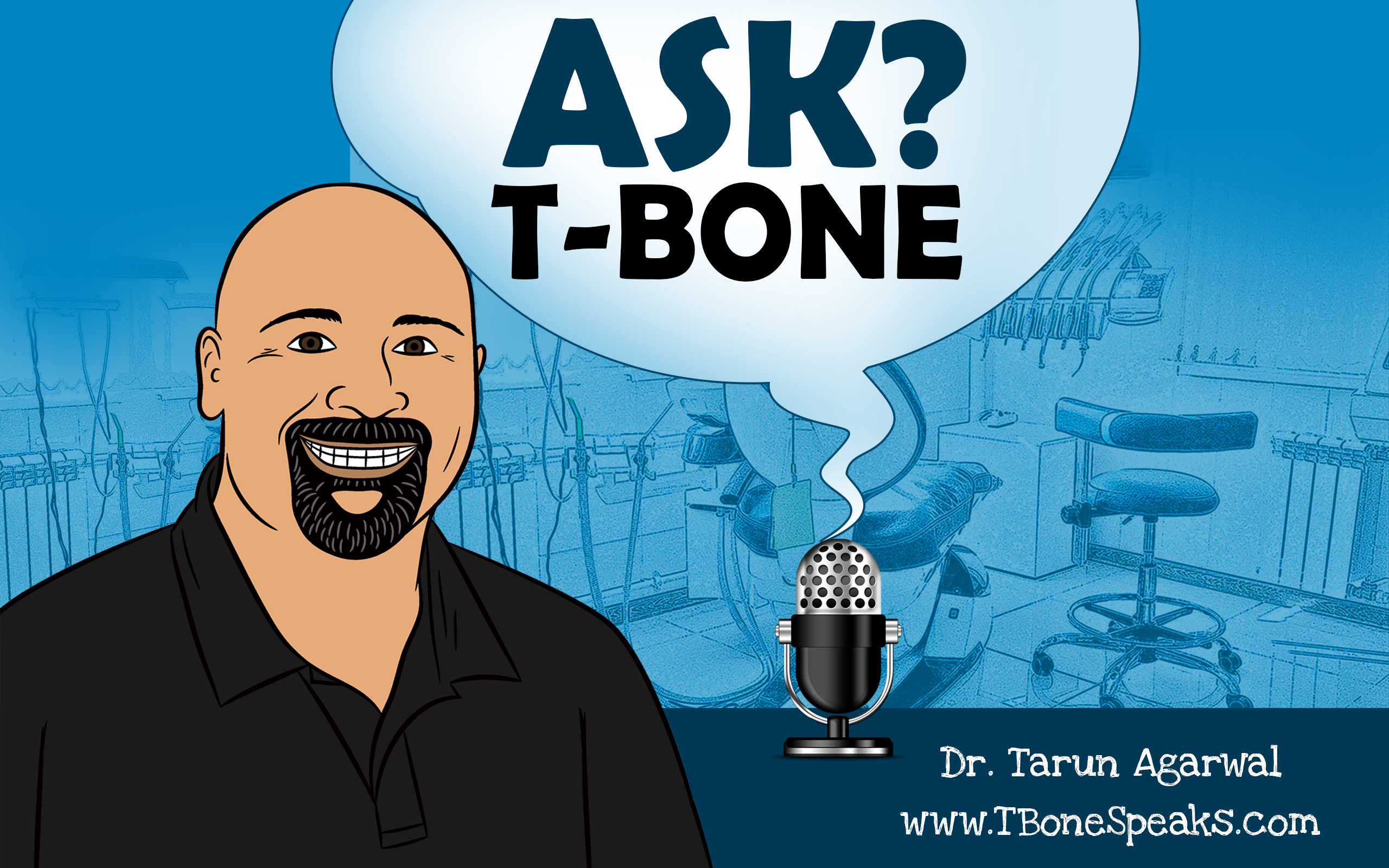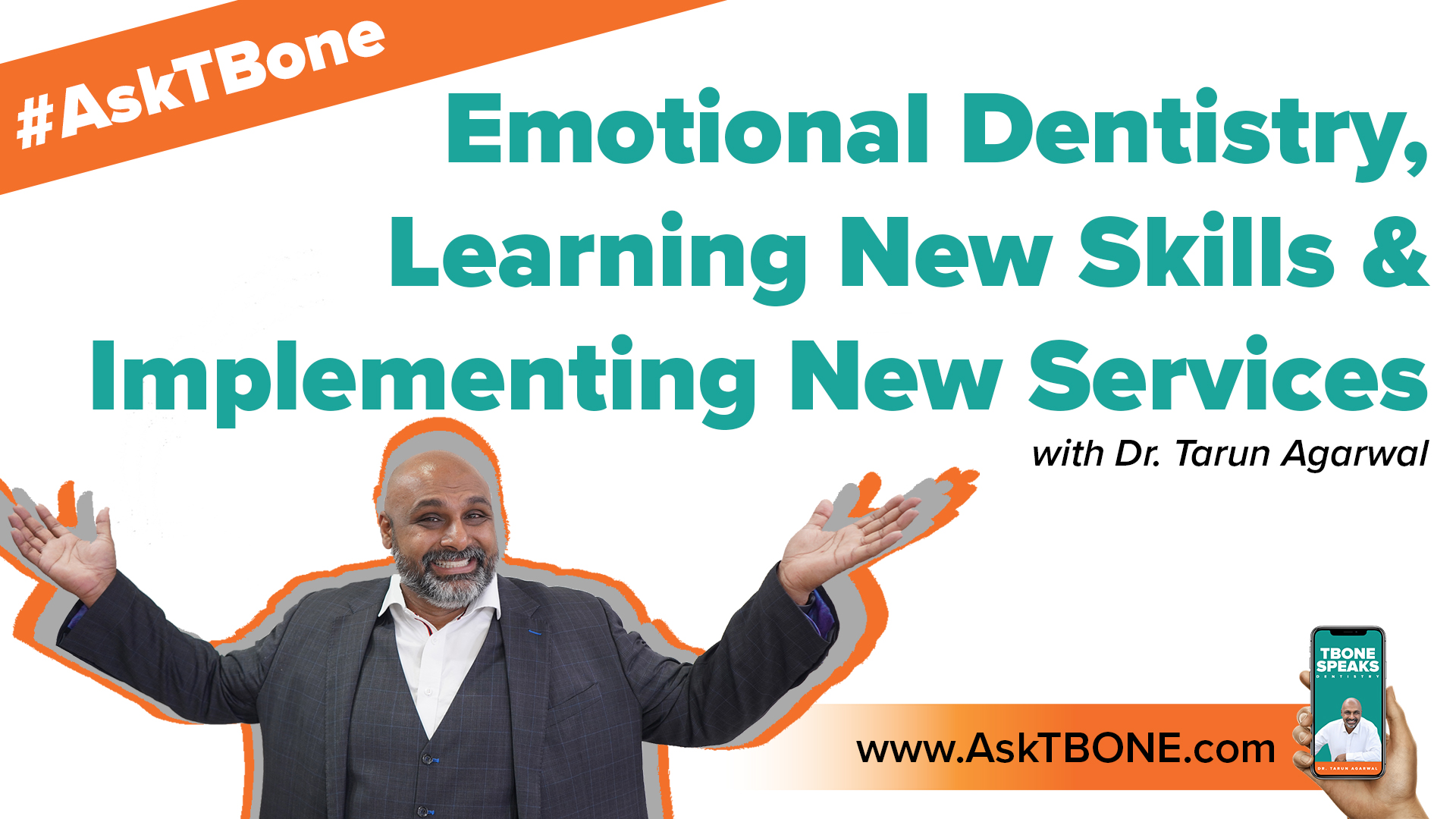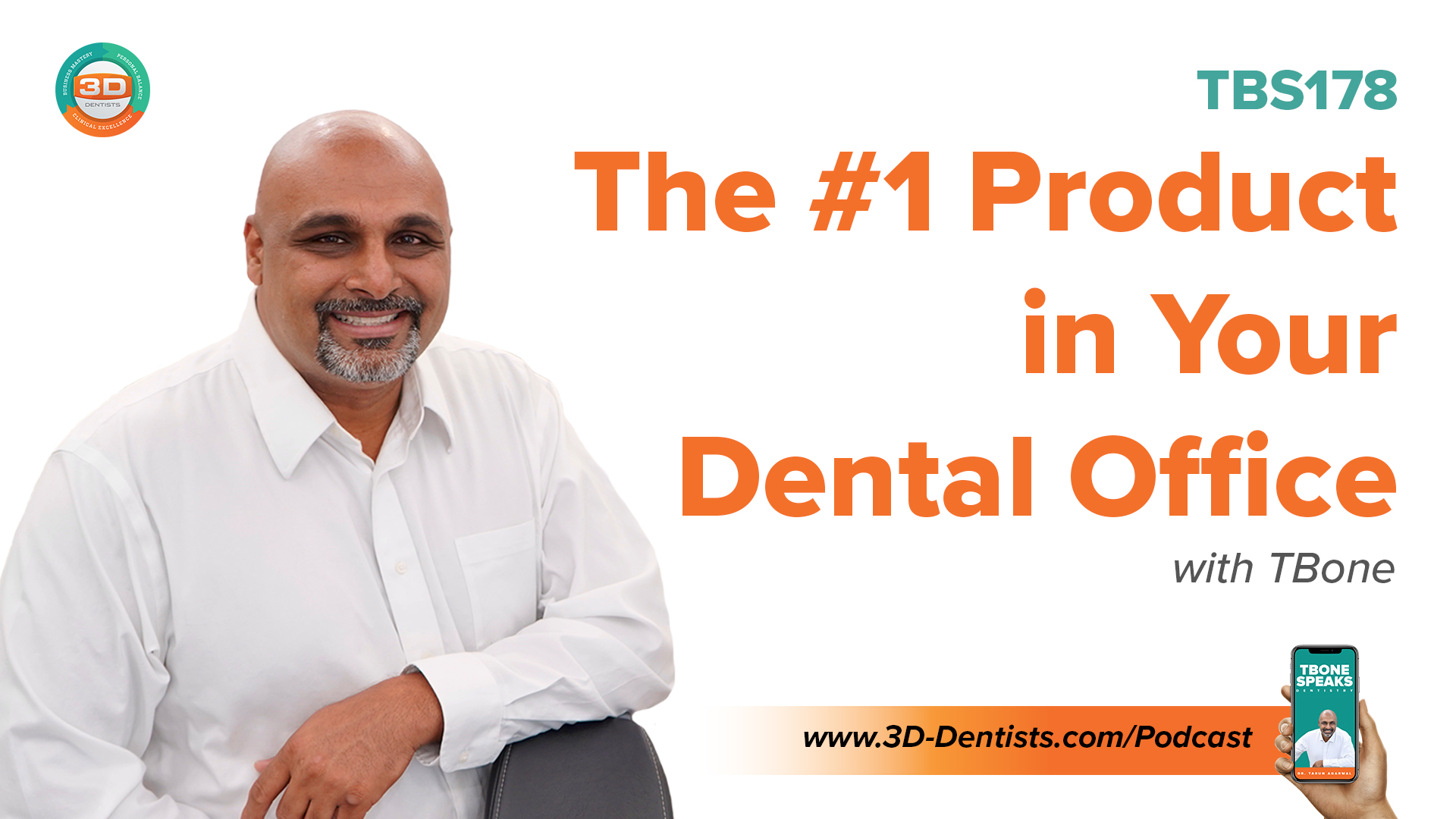Welcome back! It’s me T-Bone and today we have another episode of #AskT-Bone on the T-Bone Speaks podcast. And today’s episode is being brought to you by me. I am self funding my campaign of T-Bone Speaks. So no, in all seriousness, we’ve got a great question today and I really want to answer it. It was submitted by Alex and it says:
Hi Tarun! Your podcast has quickly become my favorite dental podcast. I’m closing on a dental office and I want to eventually start placing dental implants. Would you recommend starting off with guided placement or free hand placement? Also, would you recommend buying a CBCT and the intraoral scanner the right away, or do you recommend waiting? Finally, if you have a CBCT: Do you have to send the scans to a radiologist for liability purposes?
Thank you very much for your great advice.
Alex: thank you so much for telling me that I’m your favorite dental podcast. It makes my heart warm, and I am serious, it does. I’m a very competitive person, I want to be one of the best, I don’t want to say I’m the best because I don’t believe such a thing exists, because we each have different things that we’re looking for, and different areas of our life that we want to excel at. So, number one, thank you for saying that and congratulations on closing on, getting ready to close on a dental office and embarking on being your own boss. There is nothing more exciting or scary in life than being your own boss. I love it, there are times I don’t like it, but I never hate it. So be ready, be prepared and be relentless in your pursuit for being excellent, that’s the only advice I can give you:
Be relentless in your pursuit of being excellent.
So, now let’s get to the second part of your question first:
If you have a CBCT, do you have to send the scan to a radiologist for liability purposes?
The answer is yes and no. I should probably say that more as the answer is no and yes, because the truth is you do not have to send your scan to a radiologist, but ultimately you do need to review your scans and then you need to be able to back up anything that you may see in terms of what it is. So, if you find something that you have no earthly idea what it is, and it looks sinister and it looks completely odd, I would encourage you to have that professionally read by a oral maxillofacial radiologist. There are many services out there that do that. The most popular one I’ve heard of is Beam Readers and they are at beamreaders.com. Then there’s also many of the dental schools that have radiologists on staff, also have radiology reading services built into the dental school. So like I know, for example, UNC here in Chapel Hill North Carolina provides a reading service for North Carolina dentists. I don’t know what they do for out-of-state dentists or not. So that it’s available. So one of the great things when you buy a CBCT: the company that you purchased it from should be providing you training from a board certified oral maxillofacial radiologist on how to properly review. I use the word review versus read very specifically there. A reading, to me, can only be done by a trained qualified professional. Review can be done by anybody who has experience in reading radiographs, so they should be teaching you how to review, what to look for in the basics of all radiology pathology, and I know that Sirona does a great job of that with thier included two-day training with one day being with her oral maxillofacial radiologist.
Now, you want to eventually start placing dental implants. I’m so happy to hear that, I think not enough general dentists are placing implants, we need to increase that, and that is one of my goals.
So what I recommend? Starting off with guided placement or free hand placement?
So I can only draw on my own experience for this and my own experience was that I started off with free hand placement because I was being too cheap to buy a CBCT, and I miserably struggled at free hand placement in the very beginning. And quite honestly it was more about fear: fear of the unknown, not knowing what was going on. Not having, you know putting the implants in the right spot, and not being committed to sticking with it. Because at the beginning you’re not as good as you’re going to be down the road. And so what happens is, what I found in my own experience, is that I wasn’t diagnosing enough, I wasn’t saying yes enough, I wasn’t tackling enough cases to get good at it. I was placing an implant here and there once every few months, and that’s not a recipe for getting good at it, in the freehand style. And then as soon as I bought a CBCT which is about a year and a half after I took training on free hand placement, the implant part of our practice blossomed. So retrospectively, I would encourage you, in my opinion, that the easiest and most logical way to start with implant placement is to do it with CBCT using guided surgery.
Now that being said I would also be remiss if I did not say that it is important to understand and have the ability to do free hand surgery when things don’t go exactly right or when you need to make a game time decision and change of plan. So, if you’re totally crushed by guided surgery you will have to limit your potential growth opportunities. That being said, the growth curve and growth opportunity on those “simple cases” that can be very easily handle with guided surgery and CBCT is tremendous. I’m talking about when you get passed that 50 implant per year mark and you want to really start… maybe not 50, maybe 30 implant per year mark, and you really want to start going above that, that’s when you need to be able to have the real skills of free hand placement. And the truth is: even with the skill at free hand placement that I have today, I still do 99.9% of my cases guided. It is a business model, is a philosophy, but there are times where things don’t go exactly right and I need to change to free hand model, and those times are far and few between. I’m talking about maybe 3 times per year in our practice, that I have to do that.
So would I recommend buying a CBCT and an intraoral scanner, probably CEREC, right away would you recommend waiting? Listen: it would be unfair and untruthful for me to say to you that I’m the right person to answer this question. Because here is the truth: I forgot what it was like 15 years ago when I was first starting in the financial pressures I was facing at that time. I can only tell you from where I sit today and where I’m at in my career professionally and financially, and I cannot imagine practicing Dentistry without either my CEREC and/or my CBCT and both of them. So, that part of me wants to say you should get them and go for it, but the pragmatic logical side of me says you should not invest in the things that you are not financially ready for, and that your practice is not mature enough for. So, I don’t know the specifics of your practice but those will be the things that I look at in terms of making that decision. Now here is what I am pretty clear about: Knowing what I know today and having done enough training with hundreds and hundreds of dentists, I would say CEREC intraoral CAD CAM is the most logical starting point in your digital journey. And the reason I say that is that it is things that you do day in and day out. You would not have a technology that you don’t use because you’re not getting the patient to say yes. So CEREC is the most logical place to start your 3D journey.
Now that being said, and I’m not trying to be wishy-washy here, I’m trying to just present the facts, I say that: CEREC saves you money, cone beam makes you money. Because for me cone beam has allowed us to expand our practice into areas that we were not doing before. So, I am absolutely in love with our cone beam, but my cone beam is totally supported by our CEREC machine, so the truth is that we’re seeing more and more people buy both. Now I’m not seeing that on people that at a fresh starting practices, but I’m saying that you should go into it knowing that you’re going to eventually get both. I would start with CEREC, I would quickly graduate to cone beam and then I would learn-learn-learn-learn, do-do-do-do, and hopefully our training can be a part of that journey for you and hopefully our podcast and blogs can be a part of that journey.
So, I want to thank you for listening, and Alex thank you for submitting that question, and if you guys could do me a favor if you really enjoy this podcast you could join our email list and you can get so much about content directly delivered to your email inbox. And you can join our email list by texting to the number 44222 and text the words “TBONESPEAKS”.
Thank you very much.
Enjoy The Show?
- Don’t miss an episode, subscribe via iTunes, Stitcher or RSS.
- Leave us a review in iTunes
- Join the conversation by leaving a comment below!









